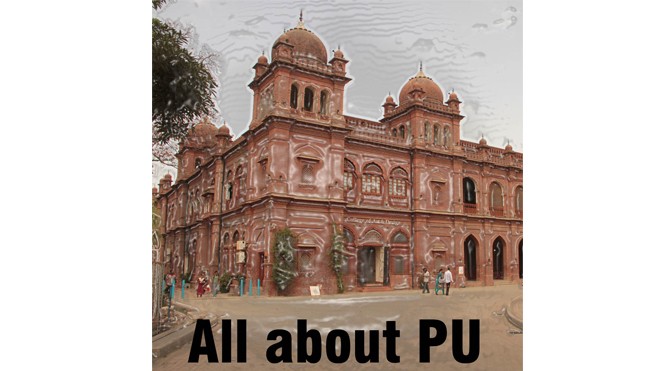
Looking at what is happening at the Punjab University in the backdrop of the clash between the Islami Jamiat Talaba and the Baloch and Pashtun councils

Punjab University is a happening place. What makes it to the media is usually not pleasant though. It is scuffles and fights between groups that have emerged at various times, challenging the might of that one powerful group. Many of these groups have been erased from the scene.
A similar incident of violence took place on March 21, when a Pashtun Council celebrating the Pashtun Culture Day was forcibly stopped by the Islami Jamiat Talaba (IJT) because they were playing music and dance. The IJT was holding a Pakistan Day function very close to the Pashtun students’ event. This led to a serious fight between the two groups, making it to the news television of the evening before getting headlines in the next day’s papers.
As both sides projected their own version of events, most people at the university agree that the ethnic councils formed by students from Balochistan, KP, Sindh and Gilgit Baltistan are peaceful.
But when and how did the Punjab University come to have these student councils representing smaller provinces, in the manner that the Quaid-i-Azam University in Islamabad has. Of course, the university has always attracted students from all over the country, but it began when the Punjab government announced a particular quota of students from Balochistan in the PU as a goodwill gesture. Thus began the Baloch as well as Pashtun councils since many of these students were Pashtun.
Read also: All about PU
So what is happening at the University today? Is the incident a manifestation of the reduced power of IJT as some people say or its enhanced power? Does this mean that the outgoing Vice Chancellor was more effective in tackling IJT and restoring peace to the university or is he still pulling the IJT strings to convey this impression? Is the closure of all curricular and extracurricular activities at the university a solution to the problem? Are the 52 per cent female students at the university changing the male-dominated rightwing ethos in any manner or just reinforcing it? Why do different parts of the university appear so different culturally? What does the IJT and the student councils have to say in their support?
The University administration needs to sit back and take a realistic view of the situation and develop a new forward-looking progressive vision for this seat of learning. It should resolve to rid the university of all elements that curb academic and personal freedom. Our Special Report today is not all about PU; it’s just a glimpse of a big problem that needs to be sorted out soon.